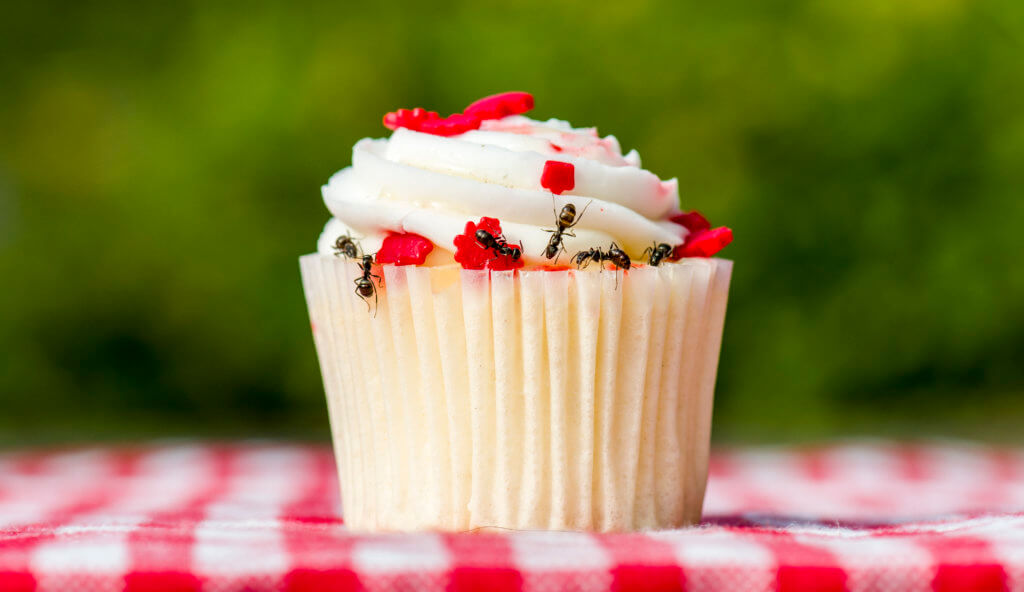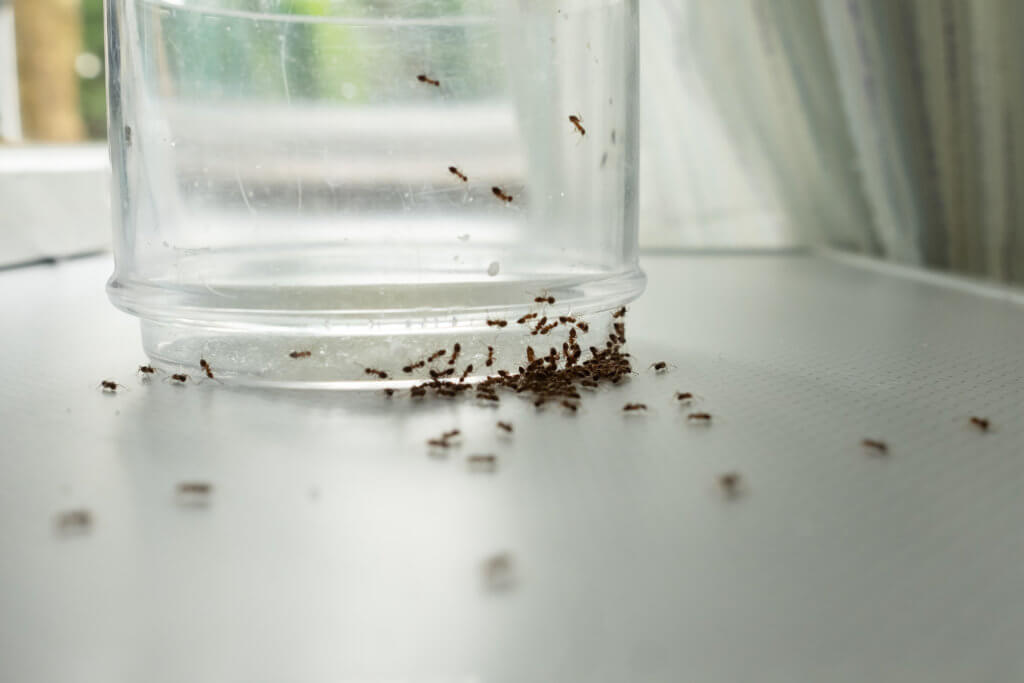What Are Sugar Ants
When you see small ants in your kitchen, you may jump to the conclusion that they are sugar ants. In reality, they aren’t! The name “sugar ant” is really just a catch-all name for any smallish ant you see in your kitchen or pantry. Some sugar ants are called odorous house ants, pavement ants, and pharaoh ants. There is an actual sugar ant species, but it lives in Australia along with a lot of really large, really poisonous other bugs. Yikes.
Do Sugar Ants Bite

Nope! And sugar ants are not dangerous. But are they annoying? That’s a resounding YES. Since they are directly related to spills and crumbs, keeping a tidy home will help. On the other hand, not keeping a tidy home… besides the optics to visitors, ants won’t be the only pest attracted to your home. Mice, cockroaches, flies, and many other pests are attracted to spills and crumbs. And once you have those pests, you’ll be attracting pests that feed on bugs like beetles and spiders. So, while sugar ants don’t bite, they could be a sign of a bigger problem.
Sugar Ants in House
If you have sugar ants in your house year after year, you have cracks and crevices that allow them in. You also have what their name implies will attract them – sugar! But remember, we aren’t talking about a sack of white granulated sugar here. They aren’t picky. Anything with sugar in it will do. That includes spills of soda, wine, beer, or juice (even just residue inside a glass), rotting fruit, or a crumb of bread under the couch. Also, if you have a garden outside near your home, be sure not to overwater. When you do that, you wash away the natural sugars your plants are producing, leaving the ants to possibly venture inside in search of sustenance. You may notice a surge of ants after a heavy rain because of that, but unless you can control the weather (if you can, let us know – we have a bone to pick about some of the colder months around here) there’s not much you can do about that reason they are migrating inside. This also may be why you see them around springtime every year – more rain. Evidently, April showers bring May flowers… and ants.
How to Get Rid of Sugar Ants

Closing those holes and crevices will help but since ants that are deemed sugar ants are relatively tiny (about 2.5-3mm in length), it can be difficult even for a professional to completely keep them out. Diligent cleaning practices will help. Clean up spills as soon as they happen. Sweep and vacuum weekly – making sure to get under the couch and chairs. Do it more often where there’s more likely to be food like the kitchen and dining room. You can put over-the-counter baits out. Don’t try DIY sprays or even over-the-counter sprays. They often aren’t as strong as they should be to take care of the ants but still have the chemicals you may be trying to avoid by going with a DIY ant repellent. You may use more than you need or not enough. Neither is good. Many times, these DIY pest control methods can either exacerbate the problem or just push them to move to another part of the house. Neither will take care of the ant problem.
How to Kill Sugar Ants
White vinegar can be used to either erase the pheromone trail the sugar ants are laying down (that trail attracts other ants – which is why you usually don’t just see one!). It also is toxic to sugar ants so can help with killing ants. It also smells terrible in your home! So, while it may work, do you want that strong vinegar smell permeating your home? We don’t. Baits will help cut down on them and of course, there’s always the bottom of your shoe! But, bringing in a professional is best. Many ants are misidentified. Remember – the only actual sugar ant species is in Australia – so what kind of ant do you really have? If it’s a carpenter ant, they could be doing damage you don’t know about. Also, different ants may take different ant control methods. More often than not, that’s the reason to call in a professional ant exterminator. For identification – and therefore proper ant treatments according to the species you have. Nobody expects you to know all the ant species. That’s what the pros are for.